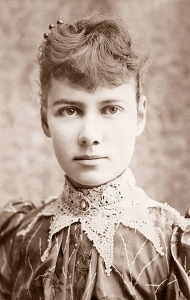Where did Tempy Bliss come from?
Since Gambling on a Scoundrel was released, a number of people have asked me about my inspiration for my heroine, Temperance Bliss, or, as I affectionately call her, Tempy.
An Idea
Tempy started out as an idea. I wanted a heroine who was confident in her abilities, but not about her relationships with other people, because I wanted to write a Pygmalion type story. To me, the only way this sort of story made sense for a strong-willed character would be if my heroine could only get her heart’s desire by making fundamental changes to herself. But how could my heroine truly be strong if she is willing to change to please someone else?
A Toehold
Trying to wrap my head around this character was a bit of a challenge, because until I could understand her motivation, I couldn’t write her properly. One of the first things that helped me pin her down was through naming her Tempy. It helped me focus on the fact that while the changes she would make to herself would be temporary (Tempy-orary?), at the core, my heroine was strong and would inevitably revert to her former self (but perhaps with a bit more polish).
Inspiration
While I was still trying to figure out what Tempy’s story would be, I was talking with a friend of mine who is a food blogger. She told me about some problems she was having with a particular fan who was constantly contacting her. The communications had become so frequent and felt so personal that it was beginning to make my friend feel as though she was being stalked. This gave me the idea that Tempy could be a journalist (bloggers didn’t exist in 1861!) who was being harassed by someone through the newspapers. That’s the moment when the shadowy Earl E. Byrd was born. (Journalists who wanted to disguise their identity often wrote under obvious pseudonyms such as these in the Victorian era.)
Women from that time period
There were very few female journalists in 1861, so the mere fact that Tempy was pursuing a career was enough to make her an outcast. As I got to know Tempy, I realized what a strong and determined woman she was. She knew what she wanted and she wasn’t afraid to go and get it. She was fortunate that she didn’t have someone controlling her life and that she had enough money to allow her to follow her dreams.
Nellie Bly
As far as real-life people are concerned, Nellie Bly was quite similar to Tempy Bliss, but Nellie’s career began a couple of decades after Tempy’s fictional story. Nellie began her career as a journalist in Pittsburgh in 1880.
Eliza Lynn Linton
A real-life contemporary of Tempy’s would have been Eliza Lynn Linton. She was a novelist, essayist, and journalist in England. I’m not certain, however, that if Tempy and Eliza had met in some alternate dimension where fictional characters and real people meet and talk, that they would have seen eye-to-eye on many topics. I’m fairly certain that Eliza would have publicly disapproved of Tempy’s belief that women should be able to do anything men could do.
I loved learning about these inspiring women as I wrote about Tempy.
So there you have it. How Tempy Bliss came into being. I hope you love her as much as I do!


